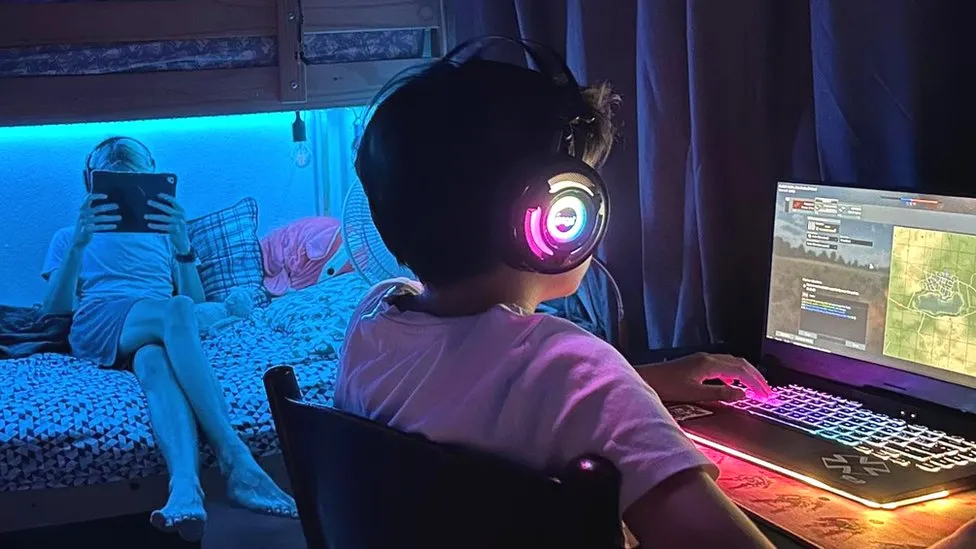How computer games encourage kids to spend cash
Nara Ward says keeping track of her kids' spending when they are playing their favourite computer games is a full-time job.
Ms Ward lives in Barbados with her husband and sons, Finn, 14, and Leif, 12.
When Leif started playing Roblox, he began asking for robux - the game's currency - that allows players to upgrade their character or buy virtual items. So his grandparents gave him $200 (£159) Apple credit for Christmas.
"To my shock, he spent all of it in a matter of days," says Ms Ward. "After that, I gave him no more than $10 worth of robux per month. He quickly became frustrated and bored with the game."
Leif moved on to World of Tanks, which also requires players to upgrade their weaponry using PlayStation credit.
"However, this game has the option to watch ads to gain credit," says Ms Ward. "He would do that out of desperation when he had used up his monthly gaming allowance."
Ms Ward says her younger son has yet to learn self-control or money-sense.
"It's something that I have to police constantly."
Rather than profiting from the initial sale of a video game, many of today's gaming companies rely on revenue generated by in-game purchases, or microtransactions.
The content purchased can be purely aesthetic - dance moves, skins or clothing.
Alternatively, in-game purchases can provide a tactical advantage to the gameplay - extra lives, character upgrades or weapons - providing a lead over players who did not purchase the additional content.
The global online microtransaction market is forecast to grow from $67.94bn in 2022 to $76.66bn in 2023.
However, there are signs of a backlash from experts and consumers alike. Also, some companies are promising new releases that are in-game purchase-free.
Gaming companies use behavioural psychology to manipulate users into spending, says Prof Sarah Mills, and the link between gaming and gambling is becoming "increasingly blurred", she explains.
Ms Mills is professor of human geography at Loughborough University. Her research found gambling techniques make gamers play for longer and spend more money, and drive repeat buying.
Vicki Shotbolt, chief executive of Parent Zone, an organisation which helps parents navigate the digital world for their children, is more specific about how games incentivise players to part with their money.
By spending players can "avoid the grind" - where making an in-game purchase means you avoid hours of monotonous gaming to progress to another level.
"Fun pain" is where you risk losing something important if you don't make a purchase.
Meanwhile, "obfuscation techniques", like in-game currencies, make it hard to see how much you're really spending.
Another tactic is the use of "loot boxes". Players buy a box without knowing what's inside. It could contain a game-changing item - but more often than not the prize is nothing more than a mediocre customisation.
"Young people recalled senses of shame when they reflected on the amount they spent trying to gain a rare item, even if they were successful," says Prof Mills.
And - despite many children saying they dislike in-game purchasing - spending money on microtransactions has become an expectation.
While spending on games has risen, some argue that playing games can benefit young people and fears are exaggerated.
Gaming as a form of play has been found to relieve stress, help develop cognitive skills and combat loneliness.


